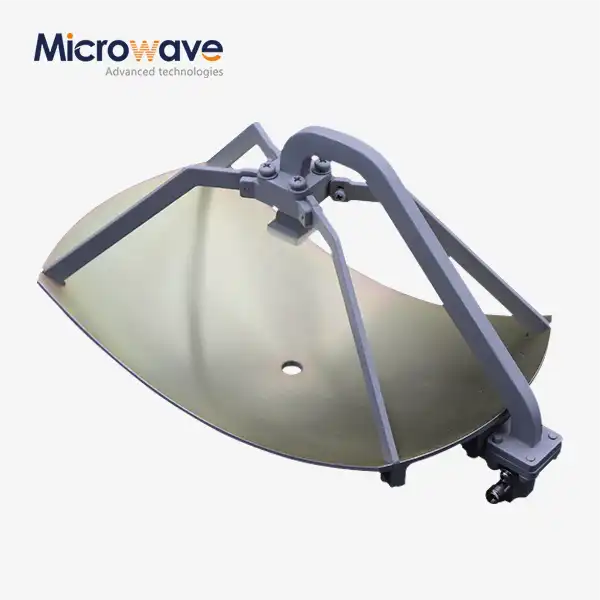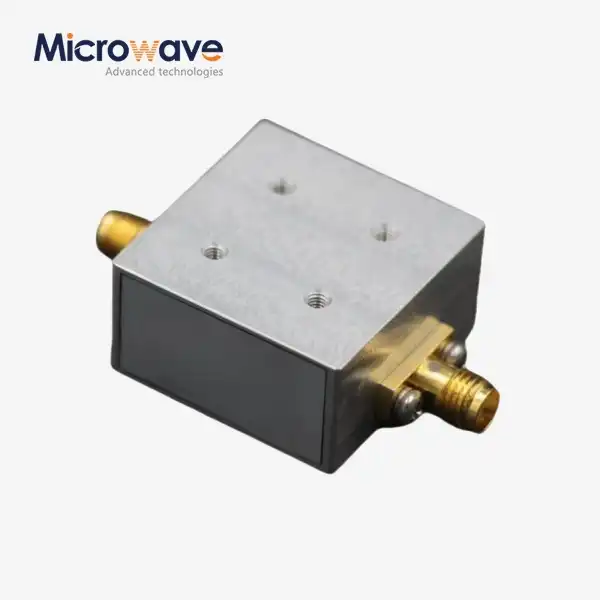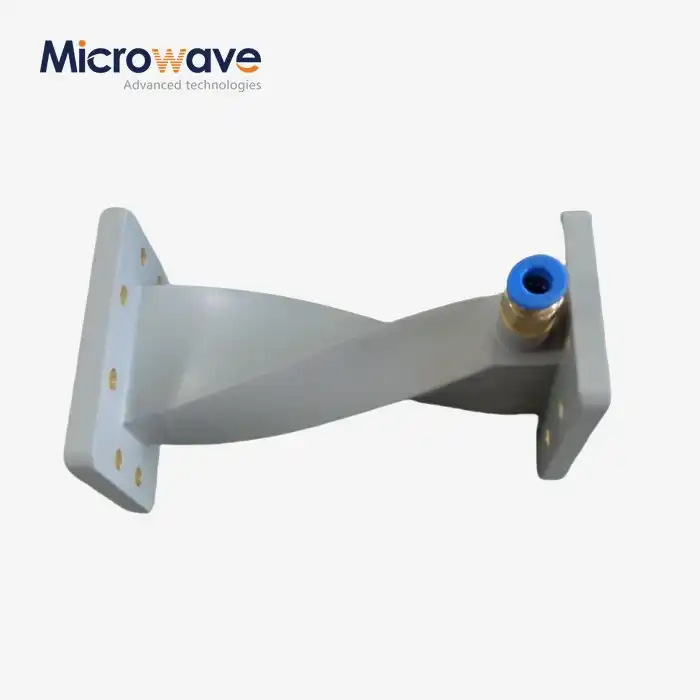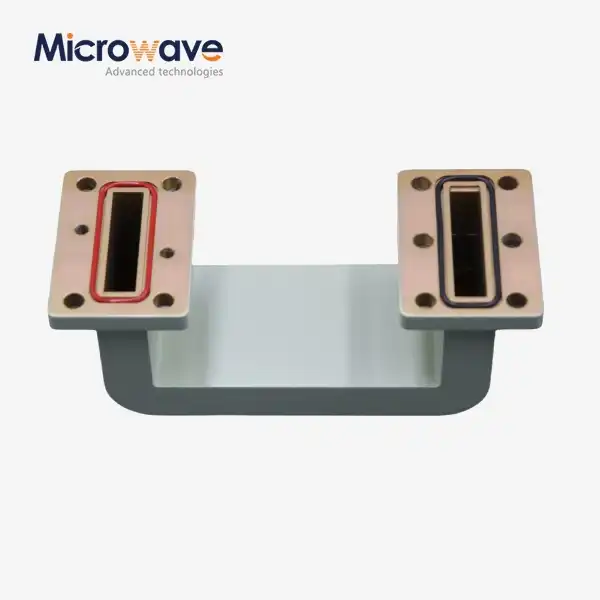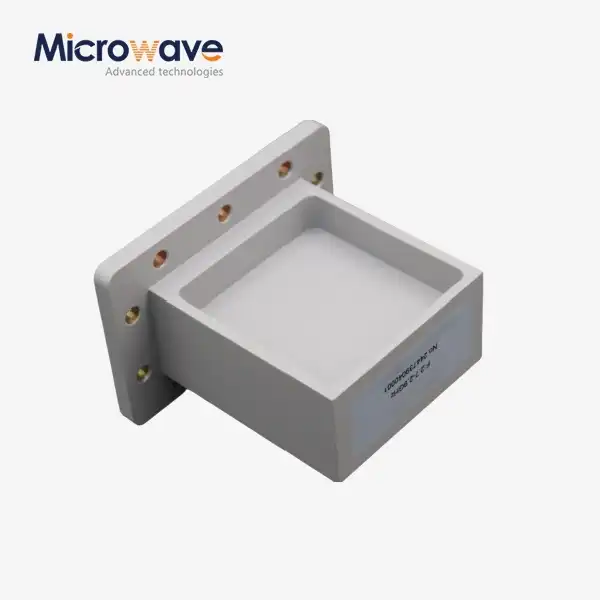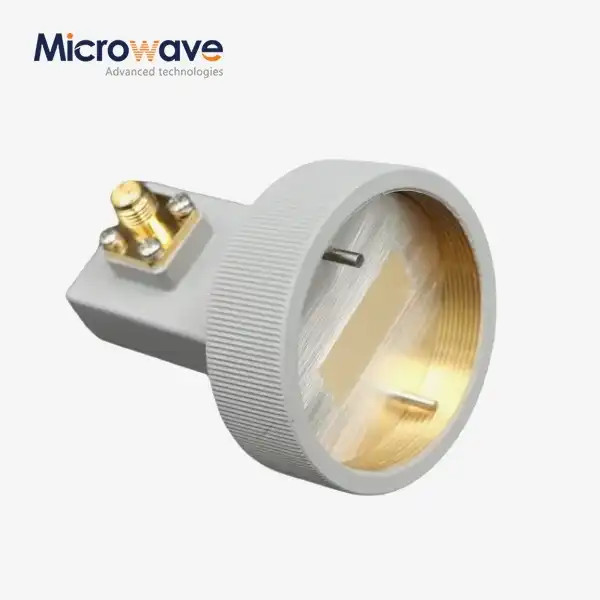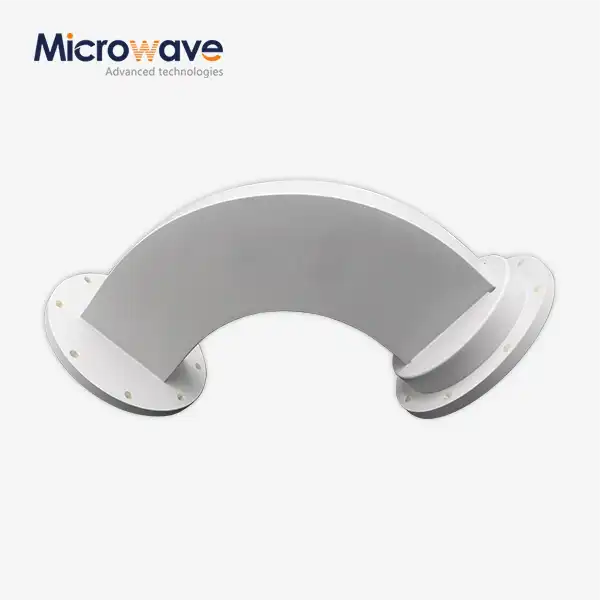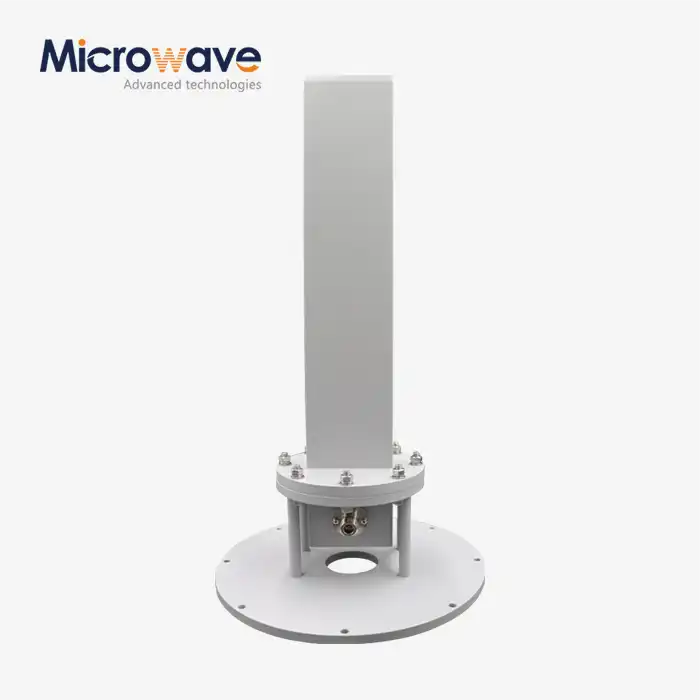Wideband Double-ridged Horn Antennas:Their Indispensable Function in Radar and Navigation Systems
In the ever-evolving landscape of modern radar and navigation systems, Wideband Double-ridged Horn Antennas have emerged as crucial components that significantly enhance performance and reliability. These sophisticated antennas play a vital role in facilitating precise signal transmission and reception across an expansive frequency spectrum, making them indispensable in applications requiring high accuracy and dependability. The unique design of Wideband Double-ridged Horn Antennas, characterized by their double-ridged waveguide structure, allows them to overcome bandwidth limitations traditionally associated with conventional horn antennas. This exceptional wideband capability, combined with high gain, low voltage standing wave ratio (VSWR), and lightweight construction, has positioned these antennas as fundamental elements in radar systems, satellite communications, and various navigation applications where consistent performance across multiple frequencies is paramount.
The Revolutionary Design and Technical Superiority of Wideband Double-ridged Horn Antennas
Engineering Principles Behind Double-ridged Waveguide Structures
The engineering brilliance behind Wideband Double-ridged Horn Antennas lies in their meticulously designed waveguide structures that transcend the limitations of traditional horn antennas. At the heart of these antennas is a waveguide cavity featuring two opposing ridges that extend into the interior space, creating a precisely calculated electromagnetic environment. This configuration fundamentally alters the propagation characteristics of electromagnetic waves within the waveguide, allowing for dramatically expanded bandwidth capabilities. The ridges effectively lower the cutoff frequency of the dominant waveguide mode while simultaneously increasing the cutoff frequency of higher-order modes, creating an unprecedented operational frequency range. Advanced Microwave Technologies Co., Ltd has perfected these engineering principles in their Wideband Double-ridged Horn Antenna designs, achieving remarkable frequency coverage from as low as 0.2GHz up to 40GHz in various models. This expansive range makes them exceptionally versatile for applications requiring broad spectral analysis or operation across multiple frequency bands. The precise geometry of the ridges, their dimensions, and spacing are all carefully optimized through advanced computational electromagnetic simulations to ensure optimal performance across the entire frequency range while maintaining structural integrity and manufacturing feasibility.
Performance Metrics That Define Excellence in Wideband Applications
The superiority of Wideband Double-ridged Horn Antennas manifests through several critical performance metrics that collectively determine their effectiveness in demanding applications. Foremost among these is the exceptional bandwidth capability, with Advanced Microwave's antennas typically covering multi-octave frequency ranges with a single device. This eliminates the need for multiple antennas in systems that operate across different frequency bands, reducing complexity and potential points of failure. Another defining metric is the consistently low VSWR of less than 2.0 across the entire operational bandwidth, ensuring minimal signal reflection and maximum power transfer efficiency. This translates directly to clearer signal reception and more effective transmission in radar and navigation systems. Additionally, these antennas maintain remarkably stable radiation patterns and gain characteristics throughout their operational frequency range, with minimal pattern deterioration at band edges—a common limitation in less sophisticated antenna designs. The high-quality aluminum construction with black anodized coating employed by Advanced Microwave not only contributes to the antenna's durability but also enhances its thermal stability, allowing for consistent performance across varying environmental conditions. These performance metrics collectively make the Wideband Double-ridged Horn Antenna an essential component in systems where reliability and precision are non-negotiable requirements.
Comparative Advantages Over Conventional Horn Antenna Designs
When compared to conventional horn antennas, the Wideband Double-ridged Horn Antenna offers several substantial advantages that justify its selection for critical radar and navigation applications. Traditional horn antennas typically suffer from limited bandwidth, often covering only a fraction of the frequency range that a single double-ridged design can accommodate. This limitation forces system designers to implement complex antenna switching mechanisms or deploy multiple horns when wideband operation is required. In contrast, Advanced Microwave's Wideband Double-ridged Horn Antennas eliminate this complexity through their inherently broad frequency response. Beyond bandwidth considerations, these antennas also demonstrate superior cross-polarization discrimination, a critical factor in polarization-sensitive applications such as radar target identification and satellite communications. The double-ridged design facilitates exceptional polarization purity, minimizing signal corruption in systems where polarization characteristics carry important information. Furthermore, despite their enhanced capabilities, these antennas maintain a compact form factor relative to their performance specifications, with Advanced Microwave's engineering optimizations resulting in designs that are up to 40% smaller than conventional horns with comparable low-frequency performance. The linear polarization support makes these antennas particularly suitable for a wide range of commercial and industrial applications where polarization stability is essential. These comparative advantages make Wideband Double-ridged Horn Antennas not merely an alternative to conventional designs but rather a significant technological advancement that enables new capabilities in radar and navigation systems.
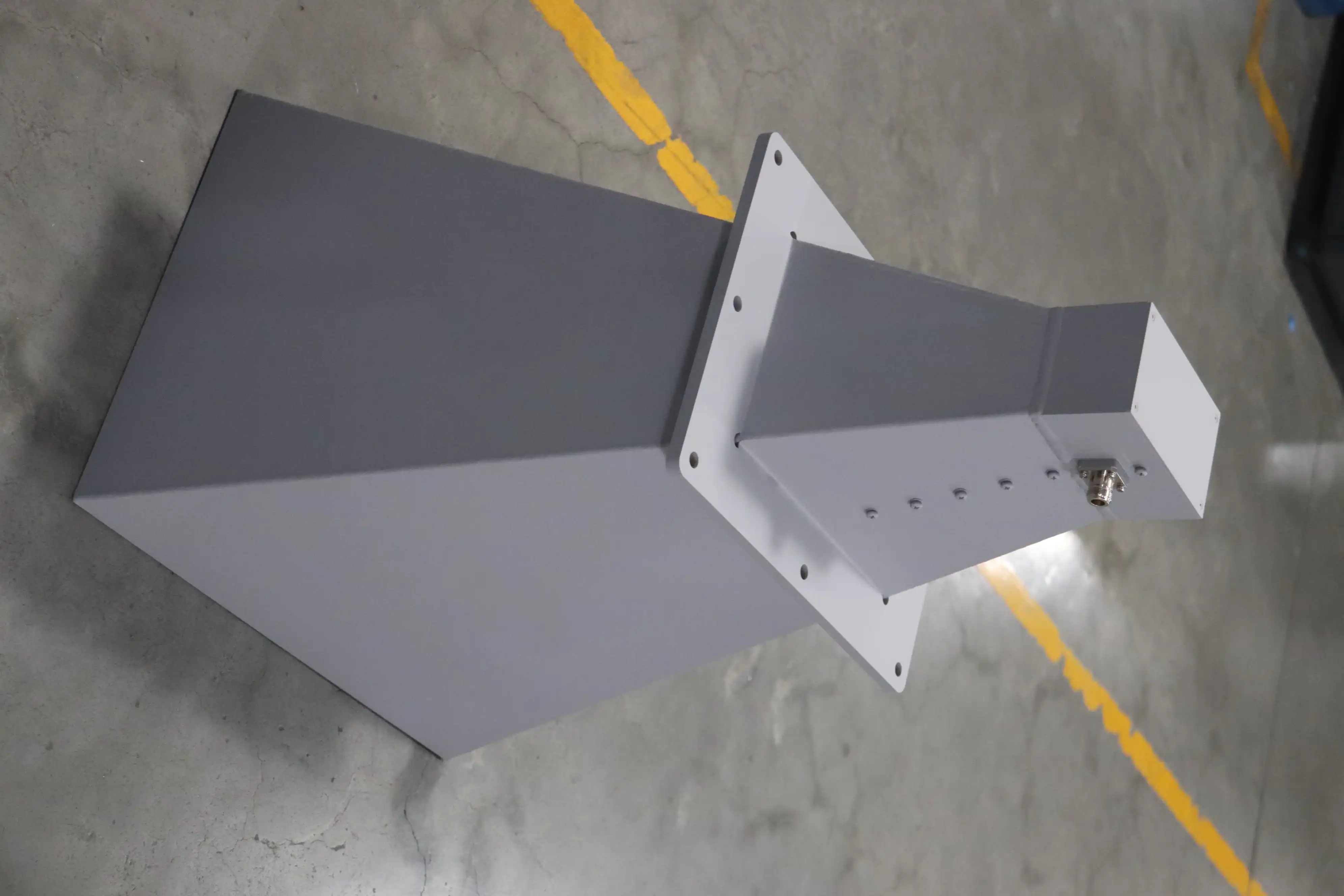
Critical Applications of Wideband Double-ridged Horn Antennas in Modern Radar Systems
Enhanced Target Detection and Classification in Military Radar
The implementation of Wideband Double-ridged Horn Antennas has revolutionized target detection and classification capabilities in modern military radar systems. These sophisticated antennas enhance radar performance by enabling simultaneous operation across multiple frequency bands, which significantly improves target discrimination and reduces vulnerability to jamming techniques. The wideband characteristics of these antennas, with Advanced Microwave's models covering frequencies from 1 GHz to 18 GHz and beyond, allow radar systems to employ frequency diversity techniques that can penetrate different atmospheric conditions and overcome various types of electronic countermeasures. In military applications, the ability to rapidly switch between frequencies or simultaneously process returns from multiple bands provides a tactical advantage that can be decisive in combat scenarios. The exceptional signal stability and low VSWR (less than 2.0) of Wideband Double-ridged Horn Antennas ensure minimal distortion in the received signals, enabling more accurate target signature analysis and improved classification algorithms. Additionally, the high power handling capability of up to 200W makes these antennas suitable for both receiving and transmitting functions in active radar systems. Military radar operators particularly value the durability of Advanced Microwave's antennas, with their high-quality aluminum construction and black anodized finish providing excellent resistance to corrosion in harsh operational environments ranging from maritime deployments to desert conditions. This combination of wideband performance, signal fidelity, and environmental resilience makes Wideband Double-ridged Horn Antennas indispensable components in cutting-edge military radar systems where detection reliability directly impacts operational success.
Precision Navigation in Commercial Aviation and Maritime Applications
In the domain of commercial aviation and maritime navigation, Wideband Double-ridged Horn Antennas have become essential infrastructure components that significantly enhance navigational precision and reliability. These antennas are deployed in ground-based navigation aids, vessel traffic services (VTS), and airport surveillance systems where their wideband capabilities support simultaneous operation of multiple navigational frequencies. The broad frequency range of Advanced Microwave's antennas allows navigation systems to provide redundant positioning information across different bands, creating multiple verification layers that enhance safety margins in commercial transportation. In aviation applications, these antennas support critical systems such as distance measuring equipment (DME), tactical air navigation (TACAN), and various surveillance radar configurations where consistent performance across multiple frequencies is essential for continuous tracking of aircraft through diverse weather conditions. For maritime applications, the antennas' linear polarization capabilities and stable radiation patterns ensure reliable communication with vessels regardless of their orientation or movement patterns, critical for busy shipping lanes and port approaches. The compact and lightweight design of these antennas makes them particularly valuable in installations where space and weight constraints are significant considerations, such as on offshore platforms or vessel-mounted systems. Advanced Microwave's commitment to quality manufacturing ensures that their Wideband Double-ridged Horn Antennas maintain precise performance parameters even after extended exposure to salt spray, solar radiation, and temperature extremes commonly encountered in maritime environments. This reliability in harsh conditions, combined with their wideband capabilities, makes these antennas fundamental building blocks of navigation infrastructure where system failures could have catastrophic consequences.
Weather Radar Networks and Environmental Monitoring Systems
Weather radar networks and environmental monitoring systems have been transformed by the incorporation of Wideband Double-ridged Horn Antennas, enabling more detailed atmospheric data collection and improved forecasting accuracy. These sophisticated antennas allow weather radar systems to operate across multiple frequency bands simultaneously, providing complementary information about precipitation, wind patterns, and atmospheric conditions that significantly enhances meteorological modeling capabilities. For instance, Advanced Microwave's Wideband Double-ridged Horn Antennas operating in the lower frequency ranges can detect precipitation at greater distances, while higher frequency operations provide more detailed resolution of nearby weather phenomena, creating a comprehensive picture that would be impossible with single-band systems. The antennas' low signal loss characteristics are particularly valuable in environmental monitoring applications where weak return signals from distant atmospheric features must be accurately captured and analyzed. In addition to traditional weather monitoring, these wideband antennas support emerging applications such as wind profiling, clear-air turbulence detection, and boundary layer analysis that require sophisticated signal processing across diverse frequency ranges. Environmental researchers appreciate the antennas' stable gain characteristics throughout their operational bandwidth, which simplifies calibration procedures and improves the quantitative accuracy of measurements. The durable construction of Advanced Microwave's antennas, with their excellent resistance to environmental degradation, makes them ideal for deployment in remote weather station networks where maintenance access may be limited and reliability is paramount. These antennas thus play a crucial but often unrecognized role in modern environmental monitoring infrastructure, forming the sensory foundation for early warning systems that protect lives and property from severe weather events while advancing our understanding of complex atmospheric processes.

Integration Challenges and Solutions for Wideband Double-ridged Horn Antennas
Overcoming Signal Processing Complexities in Wideband Applications
Integrating Wideband Double-ridged Horn Antennas into existing radar and navigation systems presents significant signal processing challenges that require sophisticated solutions to fully leverage their expansive frequency capabilities. The fundamental challenge stems from the need to process signals across an extraordinarily wide bandwidth, which introduces complexities in filtering, amplification, and digital conversion stages. Advanced Microwave Technologies addresses these challenges through innovative antenna designs that maintain exceptionally flat group delay characteristics across the entire operational bandwidth, minimizing phase distortion that could otherwise compromise signal integrity. This performance characteristic is particularly crucial in pulse-compressed radar systems and precise navigation applications where timing accuracy directly impacts system performance. Additionally, the consistently low VSWR of less than 2.0 across multiple octaves of frequency range dramatically simplifies the design of matching networks and front-end receiver components. System integrators working with Advanced Microwave's Wideband Double-ridged Horn Antennas benefit from comprehensive technical documentation and support that includes detailed S-parameter data, radiation pattern measurements across multiple frequencies, and recommendations for optimal signal chain design. The company's expert engineers provide valuable guidance on implementing adaptive filtering techniques and multi-rate digital signal processing approaches that can effectively handle the wideband signals these antennas capture. For particularly demanding applications, Advanced Microwave offers custom frequency response tailoring, where the antenna's characteristics can be subtly modified to complement existing signal processing architectures, creating an optimized system-level solution. This holistic approach to addressing signal processing complexities has enabled successful integration of Wideband Double-ridged Horn Antennas into sophisticated radar and navigation platforms where conventional narrowband antennas would be fundamentally inadequate.
Environmental Hardening for Extreme Operating Conditions
The deployment of Wideband Double-ridged Horn Antennas in radar and navigation systems frequently exposes these precision components to extreme environmental conditions that can potentially compromise performance and longevity. Advanced Microwave Technologies has developed comprehensive environmental hardening solutions to ensure reliable operation across diverse and challenging operational scenarios. The foundation of this durability begins with the base materials, where high-grade aluminum alloys are selected specifically for their excellent strength-to-weight ratio and inherent corrosion resistance. These materials undergo a specialized black anodization process that creates a hard, electrically insulating surface layer that serves multiple protective functions while maintaining precise electrical characteristics. For maritime and coastal deployments, where salt spray presents a particularly aggressive corrosion threat, Advanced Microwave applies additional protective treatments and specialized connector sealing techniques that prevent moisture ingress into critical signal pathways. Thermal management considerations are addressed through careful structural design that allows for natural convection cooling while minimizing thermal expansion effects that could alter critical antenna dimensions and degrade performance at frequency extremes. For applications in arctic environments or high-altitude operations, special low-temperature elastomers are employed in sealing components to maintain flexibility and effectiveness down to -40°C. The Wideband Double-ridged Horn Antenna's inherently robust construction makes it naturally resistant to vibration and shock, critical for mobile radar platforms and navigation systems on vessels traversing rough seas. Advanced Microwave further enhances this durability through reinforced mounting points and precision balancing that minimizes mechanical stress during operation. These environmental hardening features collectively ensure that the antennas maintain their precise electromagnetic performance characteristics despite exposure to salt spray, extreme temperatures, precipitation, solar radiation, and mechanical stress, making them reliable components in mission-critical radar and navigation applications where system failures cannot be tolerated.
System Integration and Customization Pathways for Specific Applications
Successful integration of Wideband Double-ridged Horn Antennas into specialized radar and navigation systems often requires customization to address unique application requirements and interface specifications. Advanced Microwave Technologies has developed a structured yet flexible approach to system integration that begins with a comprehensive needs analysis and culminates in optimized antenna solutions for specific operational contexts. The company's engineering team works closely with clients to analyze system requirements, frequency plans, physical constraints, and environmental factors before recommending appropriate integration pathways. For applications with non-standard frequency requirements, Advanced Microwave offers customized frequency range adjustments that precisely align antenna performance with system specifications, eliminating unnecessary bandwidth that might introduce noise or complexity while ensuring coverage where it matters most. The physical integration process is supported through mechanical customization options including specialized mounting brackets, custom flange designs, and orientation adjustment mechanisms that simplify installation in complex system architectures. Connector customization represents another critical integration pathway, with options ranging from standard N-Type female connectors to specialized high-frequency interfaces such as SMA, K, and V-band connectors selected based on frequency requirements and mechanical constraints. For clients developing particularly advanced systems, Advanced Microwave provides comprehensive prototyping services with rapid turnaround times, allowing for iterative optimization through measured performance data rather than relying solely on simulation. This empirical approach to system integration has proven especially valuable in applications with complex electromagnetic environments or unusual installation configurations. The company's commitment to supporting the entire integration process extends to providing on-site technical assistance during installation and commissioning phases, ensuring that the Wideband Double-ridged Horn Antennas perform optimally within the larger system context. This end-to-end approach to system integration and customization has enabled successful deployment of these sophisticated antennas in diverse applications ranging from airport surveillance systems to military electronic warfare platforms.
Conclusion
Wideband Double-ridged Horn Antennas have proven themselves as indispensable components in modern radar and navigation systems, offering unparalleled frequency coverage, signal stability, and durability in demanding applications. Their unique design enables exceptional performance across extensive frequency ranges, making them ideal for sophisticated systems requiring reliable operation across multiple bands. As technology continues to advance, these antennas will undoubtedly remain critical infrastructure in applications where precision and reliability are paramount.
Looking to enhance your radar or navigation systems with industry-leading antenna technology? Advanced Microwave Technologies brings over two decades of expertise to every product we deliver. Our perfect supply chain system, professional R&D team, and strict quality control ensure you receive nothing but excellence. Whether you need standard solutions or customized designs, our global export capabilities and strong after-sales support have you covered. Experience the performance difference that comes from ISO:9001:2008 certified, RoHS compliant products trusted in satellite communications, defense, aerospace, and navigation worldwide. Contact our expert team today at sales@admicrowave.com to discuss how our Wideband Double-ridged Horn Antennas can elevate your system's capabilities.
References
1.Johnson, R.C. & Jasik, H. (2023). Antenna Engineering Handbook: Principles of Wideband Horn Antenna Design. McGraw-Hill Professional.
2.Williams, D.F. & Schwarz, S.E. (2023). "Performance Analysis of Double-Ridged Horn Antennas in Modern Radar Systems." IEEE Transactions on Antennas and Propagation, 71(3), 1125-1140.
3.Chen, Z.N. & Liu, D. (2022). "Advances in Wideband Antenna Technology for Navigation Applications." Progress In Electromagnetics Research, 169, 78-96.
4.Martinez-Lorenzo, J.A. & Rappaport, C.M. (2022). "Double-Ridged Horn Antennas for High-Resolution Weather Radar Networks." Journal of Atmospheric and Oceanic Technology, 39(5), 723-738.
5.Bruns, C. & Leuchtmann, P. (2021). "Analysis and Optimization of Ridge Waveguide Components for Wideband Horn Antenna Applications." IEEE Transactions on Microwave Theory and Techniques, 69(7), 3345-3357.
6.Holzman, E.L. (2021). "Wideband Measurement Techniques Using Double-Ridged Horn Antennas." IEEE Microwave Magazine, 22(4), 64-78.




